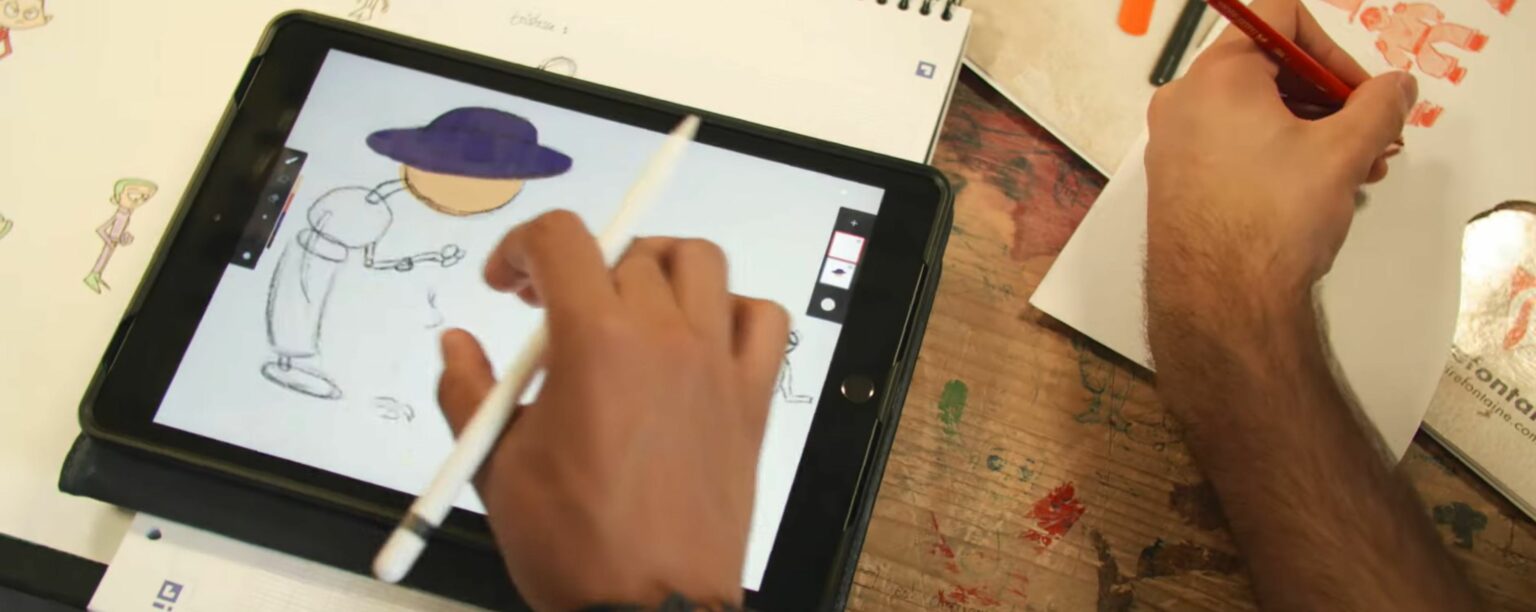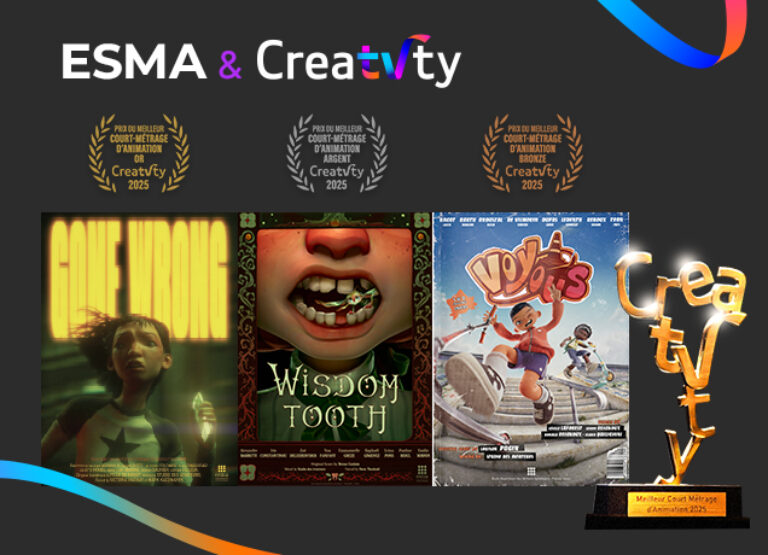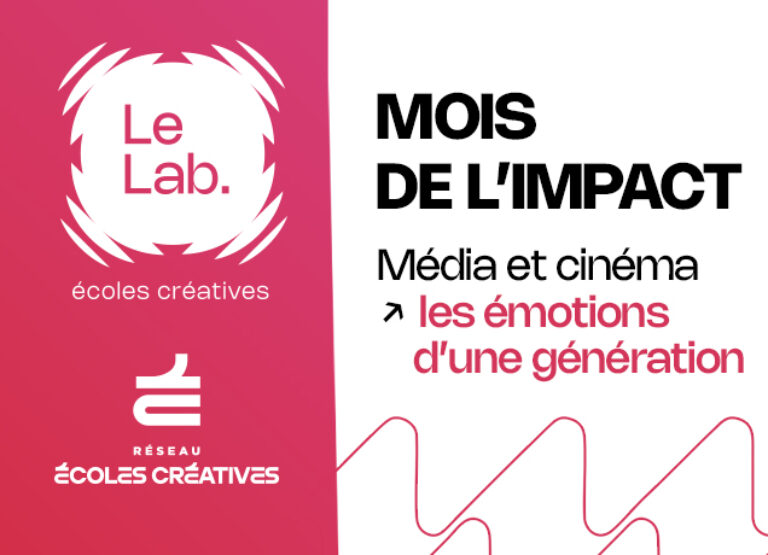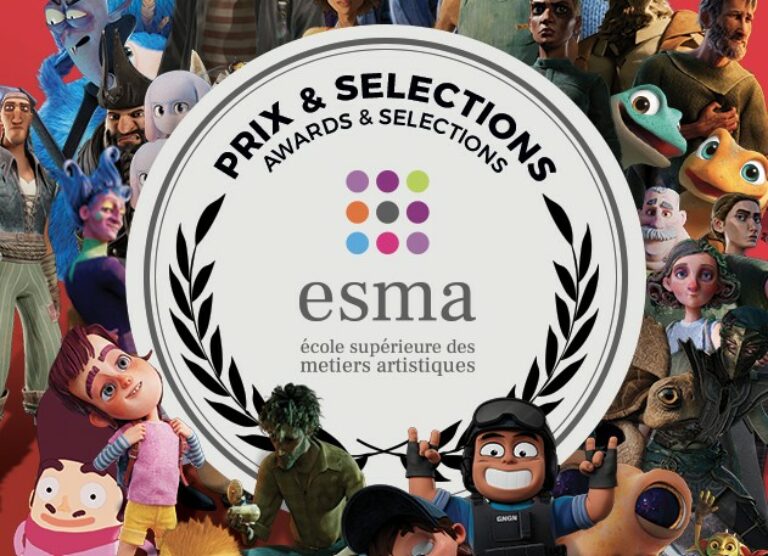
- Published 02.14.2025
- type Thematic news items
- Training 3D Animation & FX
3D animation makes it possible to recreate volumes in a virtual environment. Video games, cartoons, feature films, advertising, marketing - this technique is now part of our everyday world. Behind these cutting-edge effects lie ultra-competent professionals, capable of combining extreme technical rigour with a passion for the creativity of the visual arts. We tell you all about the training courses available to become a coveted 3D animator, the tips for choosing the right 3D animation school, and the skills and expertise required.
Overview of 3D training schools
Why choose 3D training?
For many students, it’s a deep love of video games that inspires them to embark on a career in 3D animation. For others, it’s the desire to pursue a creative activity with direct applications in the employment sector. And, of course, the possibility of putting these skills to good use in the world of film, video games and entertainment in general is another undeniable attraction. If you want to get the job of your dreams, it all starts with comprehensive and demanding training in 3D animation.
What are the advantages of professional training in 3D?
3D animation is everywhere. This means that training in the field offers a wide range of opportunities and access to a variety of jobs. Thanks to a short (but intense!) course and immersive work placements during the training, this pathway also leads to rapid integration into the employment sector. Finally, this course is essential for anyone who dreams of travelling, working in the world’s major studios, or even getting a taste of the Hollywood myth.
How do you choose your 3D training school?
The quality and standards of 3D training courses
Not all training courses are created equal, and the choice of school is certainly the most important factor in getting your career off to a good start. A good course should provide you with three crucial elements: skills, experience and knowledge of the industry. To be sure of the seriousness of your future school, check out its website, social networks, blog articles and testimonials from former students. In particular, check that :
- The courses are face-to-face, for a stimulating and rewarding learning environment,
- The school is equipped with all the latest equipment and cutting-edge software to provide skills that reflect the latest innovations in the field,
- The curriculum includes a large number of internships meetings with professionals, so you’ll have a good understanding of what goes on behind the scenes during your student years,
- You will learn from recognised professionals, who can both teach theoretical knowledge and give examples of how to apply it,
- Workshops, meetings and other similar events are regularly organised to enable students to build their network in France and abroad.
Employability
- The main criterion in selecting your school is employability. Here again, do your homework to make sure that your degree will open a lot of doors for you. Do some research to :
- Consult testimonials from former students whose 3D animation training played a decisive role in their future careers,
- Find out about possible partnerships with studios through the school,
- Browse the list of winners in recent years in various competitions such as the Rookies Awards, the world’s largest competition dedicated to young talent in the image professions: 3D animation, computer graphics, video games, etc.
- Scrutinise the school’s track record: which students have been the most successful and what projects have they worked on?
- Check that support is available after you graduate or that there are alumni associations, for example, which are essential in a sector where networking and word-of-mouth are so valuable.
Key skills for success in 3D
Flawless mastery of animation software
A good education in 3D animation largely consists of learning software. This 3D animation software, and its constant updates, will be your daily working tools throughout your career. While new and increasingly sophisticated programmes are constantly being released on the market, some of them are veritable must-haves in the industry, such as :
- Maya: used by the world’s biggest post-production studios, Maya has been a benchmark since the early 1990s. Its first mainstream project? The animation of Aladdin’s famous flying carpet in the Disney feature film.
- Houdini : this software covers all the major areas of 3D production and is used extensively in the video game and film industries, notably by the legendary Studio Ghibli.
- Unreal Engine: this tool from Epic Games is a video game engine, much used by our students in particular when creating their video games, which is a form of simulator that can be used to create all the virtual worlds in which the games take place. 3D animators use it to design hundreds of very different games, most recently Matrix Awakens and the survival horror game The Day Before
Real expertise in modelling and texturing for realistic rendering
- To give birth to 3D objects or characters, you need to know all the subtleties of 3D modelling, i.e. the process of creating virtual three-dimensional objects. After this initial construction phase, texturing comes into play. This involves giving the shapes you have just built a realistic appearance using textures, patterns or colours. The project is far from finished, as you will then have to animate your creations, as well as working on lighting, rendering and much more. All this helps to bring some particularly immersive projects to life, such as the remarkable Insects in 3D project by students at ESMA Nantes.
- Soft skills: adaptability, teamwork, creativity, innovation and attention to detail.
Conclusion
While we have focused on the skills that are essential for becoming a 3D animator, we must not forget the soft skills. A film or video game is a gigantic jigsaw puzzle on which a whole team works, and for which very precise deadlines must be respected to the letter. That’s why it’s vital for a good 3D animator to be able to communicate about his or her work, give clear instructions and meet deadlines. While a creative mind is essential, it’s also your flexibility and meticulousness, even under pressure, that can really make all the difference.





